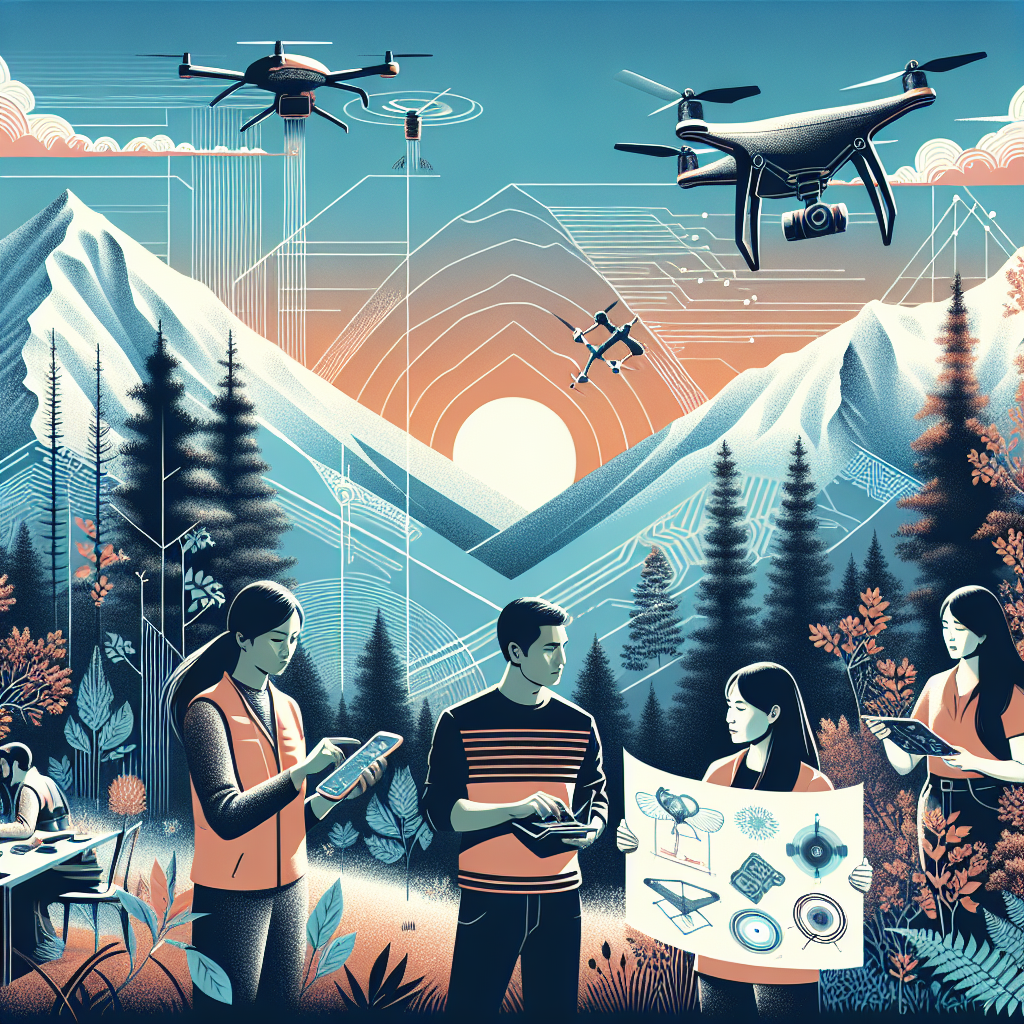-
Table of Contents
- AI Innovations: A New Hope for Preventing Bear Attacks in Japan
- The Rising Challenge of Bear Encounters in Japan
- AI-Driven Solutions for Bear Management
- AI Surveillance Systems
- Automated Alert Systems
- AI in Bear Repellent Strategies
- Case Studies and Success Stories
- Hokkaido’s AI Monitoring Project
- Nagano’s Smart Bear Management
- Future Prospects and Challenges
- Conclusion
AI Innovations: A New Hope for Preventing Bear Attacks in Japan

In recent years, Japan has seen a notable increase in bear encounters, particularly in rural and mountainous regions. These encounters can lead to dangerous situations, not only for local residents but also for the bears themselves. However, advancements in artificial intelligence (AI) are providing new solutions to mitigate these risks, offering a beacon of hope for both human and animal safety. This article explores the innovative AI-driven strategies being implemented to prevent bear attacks in Japan, highlighting their effectiveness and potential for future applications.
The Rising Challenge of Bear Encounters in Japan
Japan’s bear population, primarily consisting of Asian black bears and brown bears in Hokkaido, has been increasingly venturing into human-populated areas due to factors such as food scarcity in their natural habitats and urban expansion. The consequences of these encounters range from property damage to fatal attacks, creating a pressing need for effective management strategies.
- Increased sightings and attacks: Reports have shown a rise in bear sightings and attacks in recent years, prompting urgent responses from local governments and wildlife agencies.
- Impact on local communities: Frequent bear encounters have led to fear and anxiety among residents, particularly in rural areas where children and the elderly are considered most vulnerable.
AI-Driven Solutions for Bear Management
Artificial intelligence is at the forefront of addressing wildlife management challenges. In Japan, several AI-based initiatives are being tested and implemented to prevent bear attacks effectively.
AI Surveillance Systems
One of the primary applications of AI in wildlife management is the use of smart surveillance systems. These systems utilize AI-powered cameras and sensors to monitor bear activity and predict their movements towards human settlements.
- Real-time monitoring: AI cameras installed in forests and potential bear hotspots provide real-time data on bear locations and movements.
- Predictive analytics: Machine learning algorithms analyze the collected data to predict bear behavior patterns and potential risks of entering human areas.
Automated Alert Systems
Linked to AI surveillance, automated alert systems are crucial in providing timely warnings to local authorities and residents about bear activities.
- Instant notifications: When a bear is detected near a residential area, the system sends instant alerts to smartphones and local warning systems, allowing for quick preventive actions.
- Enhanced preparedness: With advanced notice, communities can better prepare and reduce the likelihood of surprise encounters.
AI in Bear Repellent Strategies
Beyond monitoring and alerts, AI is also enhancing direct intervention strategies such as the deployment of smart bear repellents.
- Smart fencing: AI-enabled electric fences can be activated based on bear proximity, deterring bears from entering specific zones without constant human monitoring.
- Adaptive repellents: Researchers are developing AI systems that adapt their repellent strategies based on bear behavior, reducing habituation to traditional deterrents like noise or light.
Case Studies and Success Stories
Several regions in Japan have begun to see the benefits of implementing AI technologies in managing bear populations.
Hokkaido’s AI Monitoring Project
In Hokkaido, where brown bear encounters are particularly common, local authorities have implemented an AI monitoring system that has successfully reduced the number of dangerous interactions by alerting communities to bear movements.
- Effective detection: The system has a high accuracy rate in detecting bear presence, which has been crucial in timely human response.
- Community cooperation: The success of the project has also relied on strong community engagement, with residents actively participating in safety drills and information sharing.
Nagano’s Smart Bear Management
In Nagano, AI-powered cameras and mobile apps have been used not only to monitor bear movements but also to educate the public about bear safety, significantly reducing the number of bear-related incidents.
- Public education: The AI system includes an educational component that informs residents about bear behavior and safety precautions.
- Integrated approach: This project highlights the importance of combining technology with community education to address wildlife challenges effectively.
Future Prospects and Challenges
While AI offers promising solutions for managing bear populations and preventing attacks, there are several challenges and considerations for the future.
- Technological advancements: Continuous improvements in AI technology will be necessary to enhance accuracy and efficiency in wildlife monitoring and management.
- Environmental and ethical considerations: It is crucial to balance technological interventions with environmental conservation and ethical treatment of wildlife.
- Cost and accessibility: Ensuring that AI solutions are cost-effective and accessible to rural communities is essential for widespread adoption.
Conclusion
AI innovations present a new frontier in preventing bear attacks in Japan, offering effective, efficient, and humane solutions to enhance both human and bear safety. By integrating advanced technology with community engagement and education, Japan is setting a precedent for wildlife management that could inspire global applications. As these technologies continue to evolve, the hope is that they will provide even more robust tools to mitigate human-wildlife conflicts, ensuring safer coexistence for future generations.

